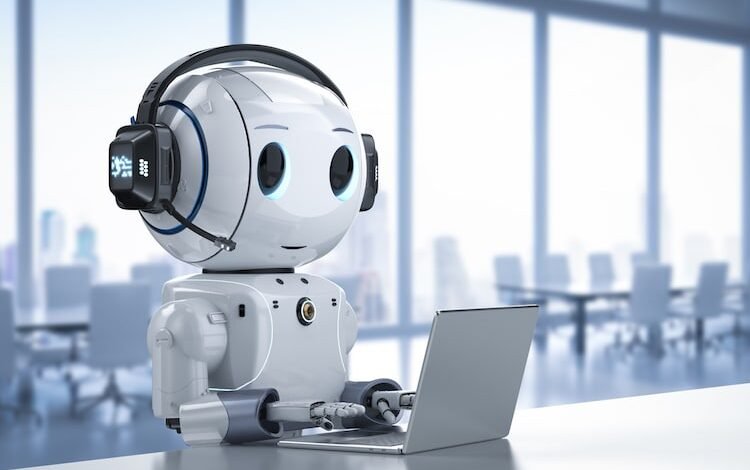Chatbot Market Analysis: Rapid Growth Fuelled by AI and Messenger Integration

The chatbot market is experiencing a substantial growth trajectory, driven by advancements in artificial intelligence (AI), natural language processing (NLP), and the increasing use of messenger applications. Estimated at USD 7.01 billion in 2024, the market is projected to reach USD 20.81 billion by 2029, expanding at a compound annual growth rate (CAGR) of 24.32% over the forecast period according to Mordor Intelligence report.
The Role of Chatbots in Modern Business
Chatbots are software applications that leverage AI and NLP to understand user requests and deliver prompt responses. Acting as virtual assistants, chatbots simplify customer interactions by processing queries and guiding users toward their desired outcomes. The technology is transforming how businesses engage with customers, offering round-the-clock support and seamlessly handling large volumes of requests. These capabilities are increasingly critical for marketing, sales, and customer service teams striving to enhance customer experience.
Key Market Drivers
-
Dominance of Messenger Applications
The widespread adoption of messaging apps is a primary driver of chatbot market growth. As users increasingly prefer communicating through apps like WhatsApp, WeChat, and Facebook Messenger, businesses are integrating chatbots within these platforms to improve user engagement and deliver personalised experiences. Chatbots on messaging apps can store chat histories, enabling companies to personalise interactions based on past behaviour and gain actionable insights for targeted marketing.
According to January 2022 statistics from Hootsuite, WhatsApp leads with 2 billion active monthly users, followed by WeChat with 1.26 billion, and Facebook Messenger with 998 million. By integrating chatbots into these platforms, businesses can efficiently reach a broad audience, enhance customer service, and achieve higher returns on investment.
-
Growing Demand for Customer Analytics
The need for customer analytics is pushing companies to adopt chatbots, which provide valuable data on user preferences and behaviour. Chatbots can track customer interactions, analyse purchasing patterns, and recommend products accordingly. This data-driven approach not only helps improve service quality but also supports business strategies aimed at increasing sales and customer retention.
-
24/7 Availability and Scalability
Unlike traditional customer service representatives, chatbots can operate around the clock, providing uninterrupted support. They can handle thousands of queries simultaneously without being overwhelmed, ensuring a consistent level of service. This capability is especially beneficial for e-commerce and retail businesses, where customers often require immediate assistance outside of regular business hours.
Applications in the Retail Industry
The retail sector is a significant adopter of chatbot technology, utilising it to streamline various processes:
- Lead Generation and In-Store Support: Chatbots assist in capturing potential customer information, answering product-related queries, and guiding users through the purchase process. For example, during online shopping, chatbots can recommend products based on user preferences, such as price, features, or customer reviews.
- Mobile Alerts and Instant Updates: Retailers use chatbots to send notifications about special offers, new product arrivals, or order status updates, enhancing the customer experience.
- Facilitating Online Orders and In-Store Pickups: Chatbots enable users to place orders directly through messaging platforms, providing details about product availability and store hours.
- Product Recommendations and Pre-Orders: By integrating recommendation algorithms, retailers can boost sales by suggesting relevant products based on browsing history and user interests.
The United States is a leader in chatbot adoption within retail. Companies like Instacart have integrated OpenAI’s ChatGPT technology to improve customer service and streamline tasks such as grocery delivery and order management. This trend is mirrored by other companies, including Facebook and Snapchat, which are incorporating AI-driven language tools to enhance their customer service offerings.
Asia-Pacific: A High-Growth Region
The Asia-Pacific region is expected to witness significant growth in the chatbot market due to rapid industrialisation and the expansion of the retail and e-commerce sectors. Key factors driving this growth include:
- Increased Adoption in Emerging Economies: Countries like China, India, Indonesia, Vietnam, Malaysia, and Thailand are seeing a surge in chatbot usage as retailers and e-commerce companies seek to enhance customer engagement and streamline operations.
- COVID-19 Accelerated Adoption: The pandemic led to increased deployment of chatbots for handling patient inquiries, facilitating remote consultations, and disseminating health information. This trend is likely to continue as organisations recognise the efficiency and cost-saving potential of automated customer support.
- Investments in Conversational AI: Companies in the region are investing in conversational AI to deliver personalised experiences across multiple messaging platforms. The advancement of NLP is making it easier for chatbots to understand and respond to human language, thereby improving the quality of interactions.
Future Outlook
The chatbot market is poised for continued growth as technological advancements make bots more efficient and capable. The integration of AI, machine learning, and NLP will further enhance chatbot capabilities, allowing for more natural and context-aware interactions. Additionally, the expansion of messaging services is expected to outpace traditional social networks in terms of user numbers, providing a fertile ground for chatbot adoption.
Challenges and Opportunities
Despite its rapid growth, the chatbot market faces challenges such as the need for better understanding of complex queries and improving language support across different regions. Companies must also address concerns related to data privacy, particularly when storing chat histories for personalisation.
However, these challenges present opportunities for innovation. As chatbot technology evolves, businesses can focus on developing more sophisticated algorithms, expanding language support, and implementing stringent data protection measures to build customer trust.
The chatbot market is set to transform the customer service landscape, with a projected market size of USD 20.81 billion by 2029. The rising popularity of messenger applications, coupled with the demand for customer analytics and 24/7 support, is driving this growth. While challenges remain, advancements in AI and NLP will continue to shape the future of chatbots, making them indispensable tools for businesses looking to improve customer experience and streamline operations. As companies in North America and Asia-Pacific lead the way, the global market is expected to witness unprecedented growth, paving the way for widespread adoption across various industries.
Article By: Myrtle Rodrigues

Myrtle Rodrigues is the Co-Founder of Incubees, a platform dedicated to fostering startups. An avid analyst of AI technological innovations and global trends, she brings a keen eye for emerging technologies and market shifts, driving insights that help shape the future of entrepreneurship and innovation.



